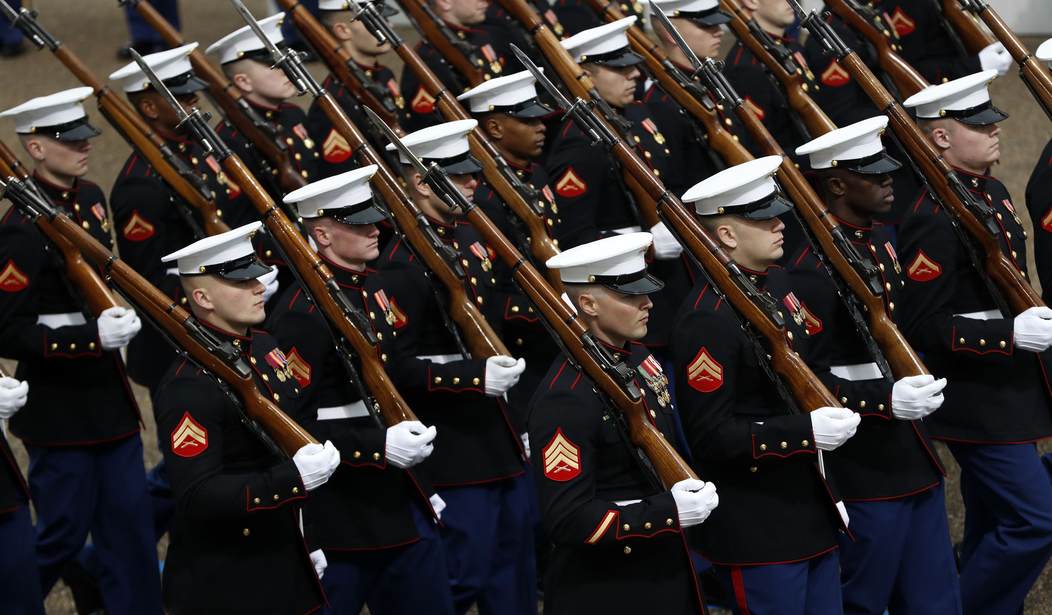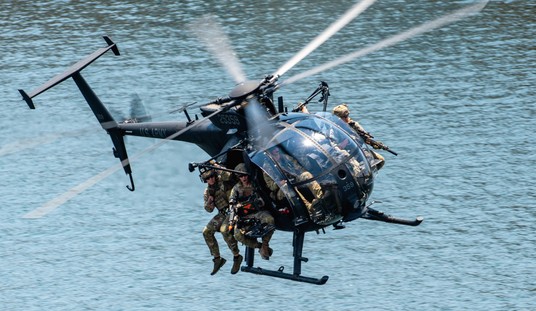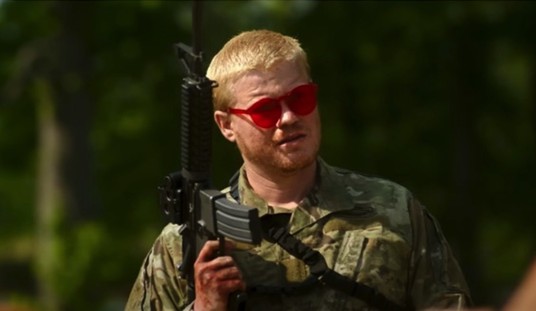
FILE – In this Jan. 20, 2017 file photo, Marines march during the 58th Presidential Inauguration parade for President Donald Trump in Washington. Trump’s lofty vision of big tanks and vintage aircraft moving through the streets of Washington in a show of patriotic force crumbled Friday under the weight of logistics, including a $92 million price tag. (AP Photo/Pablo Martinez Monsivais)
How about a feel-good story about feeling bad?
In our current state of quarantine, you’ve no doubt been exposed to tales of woe that ended badly due to COVID-19.
But there’s an 87-year-old out there who wants you to know that not everyone over 65 who gets the virus falls to it.
CBS News recently featured veteran Franklin Eller.
The former Marine has now survived two tours in Vietnam and one tour of the Wuhan flu, and he says his military training helped him get through it all.
[See Franklin’s full account in the video below]
Not long ago, Franklin was frolickin’ with his wife on a two-week Caribbean cruise when he started gettin’ the blues.
“I was feeling pretty lousy about six days into the…cruise,” he remembers.
At first, he “kinda let it go.”
But:
“[I]t kept getting worse and worse. And I had trouble breathing, and I couldn’t walk very far.”
Yeah — that sounds like it might be time to put away your shuffleboard cue and seek medical attention — if you can pull yourself away from that 80’s-themed Mega Deck Party.
On his third day of disorder, Franklin’s wife talked him into going to the ship’s medical center. The staff saw he was in “pretty bad shape,” and they took every course available:
“They did all the tests they could do. They didn’t have any of the virus tests, but they did have the X-rays and the blood test.”
At one point, Franklin caught a glimpse of himself:
“[I] happened to glance at the X-ray they took of my chest, and both lungs were just…black. Filled with infection.”
He was given antibiotics, but he doesn’t believe there was any mention of the coronavirus:
“I don’t think the subject came up. It really didn’t. The doctor saw what I had, which was infected lungs. And he treated what he saw there. And then he allowed that, ‘This might be bigger than we can handle, so we should get with the coast guard and evacuate him.'”
The 25-year military man — who had a lot of coughing but no fever and “no pain as such” despite being “very uncomfortable” — describes his bucketed bounce:
“[T]hey lower a basket down to the ship’s deck, and they carry me out. And they attach the basket to a cable that they lowered and pull me up and into the helicopter. [Then they] flew me here to the Mayaguez Medical Center.”
Mayaguez ICU Director Dr. Monica Egozcue explained to CBS that she knew right away Franklin’s problems weren’t run-of-the-mill:
“I have to say that I saw his chest X-ray from the cruise, and from that moment, I knew that we were not dealing with a common pneumonia process. So that’s why we treated this patient from day one as a possible COVID-19 patient. When a patient has pneumonia, the findings on X-rays are called infiltrates. So his infiltrates on the chest X-ray were more central, what we call perihilar. That’s not usual in pneumonia. Pneumonia usually affects a certain part of the lungs — either the upper zone or the lower one. Infiltrates were located in the central part of the lungs, which is not common in the pneumonia process. So at that moment, we had high suspicion. Plus, his white blood cells were elevated. However, he had lymphopenia, which is found in these types of patients … He was treated always like a COVID-19 case.”
As soon as he arrived at the hospital, Franklin says, everybody got down to business:
“Fortunately, they had a test kit there and they did the test and sent it away. … I think it took about six days to get it back. But it did come back positive. In the meantime, they unleashed full efforts to treat me with antibiotics and give me oxygen and get me stabilized. And once they got the test results, they knew what they had. But even before that, suspicious that it might be the virus, they put me in isolation. “
So what kind of treatment did he receive?
“Well, the primary treatment is the antibiotics to fight the infection in the lungs. And then the oxygen to help me breathe better. And there were other drips they put in. I don’t recall just what they were. But whatever they did, it stabilized my condition. And it has gradually improved to the point that I can breathe on my own.”
Once he was isolated and given medicine and oxygen (but never a through ventilator), he felt better almost immediately.
Franklin’s wife “continued on for four more days and offloaded with the ship’s passengers in Miami and flew back to [their] home in San Diego.”
“Of course,” he says, “they’re all nervous back there, wanting to know what’s going on.”
His daughter lives with him and his wife, so both women have been tested. They’re still awaiting the results.
As for Franklin, the nearly-90-year-old’s been tested twice now and shown to be negative — a requirement for release from the hospital.
So what’s the moral of the story? At the end of the day, he attributes his victory over the virus to four things:
“First of all, the Marine Corps trains us to deal with adversity; they teach us to adapt, overcome, and continue the mission. That’s what I’ve tried to do, every time I’ve encountered an adverse condition in my life. And with two tours in Vietnam plus other national emergencies that the Marines responded to, I feel that I can speak on the subject of adversity. The second one is my wife and my family back in San Diego in Humboldt County, California. Their love and support. Of course, we could not have done it without the hospital’s outstanding efforts.”
And perhaps most critically:
“[F]inally, the grace of God. That’s what I have here.”
-ALEX
See 3 more pieces from me:
Keanu Reeves Reminds Us of a Simple Rule For Living
Find all my RedState work here.
And please follow Alex Parker on Twitter and Facebook.
Thank you for reading! Please sound off in the Comments section below.













Join the conversation as a VIP Member